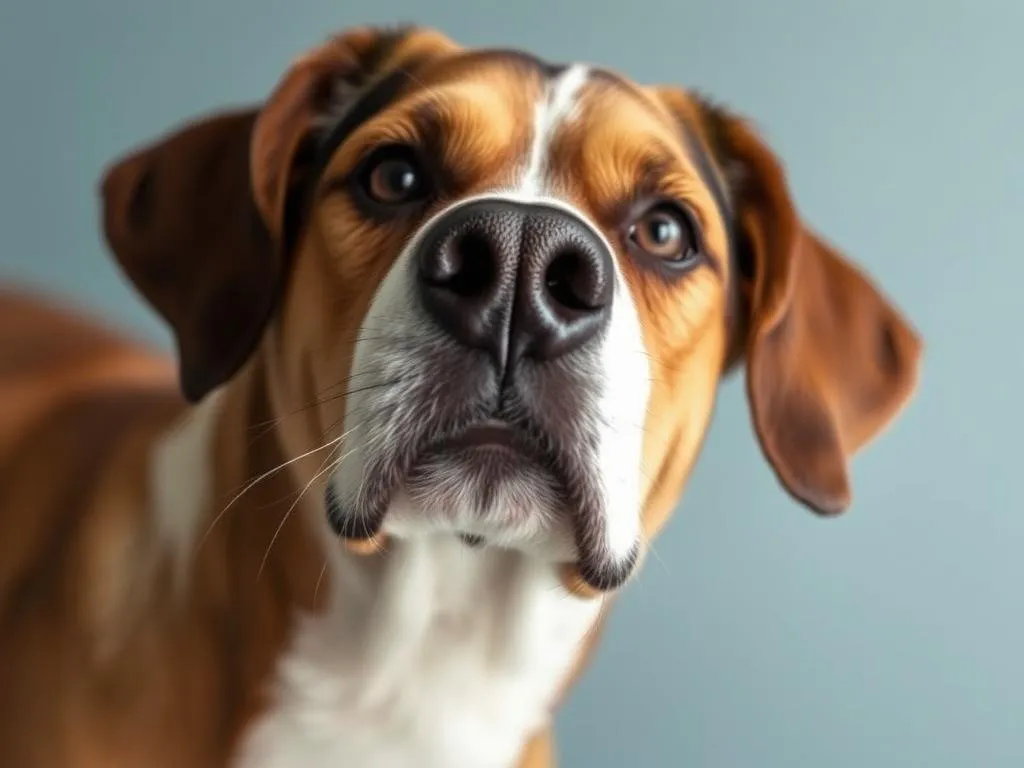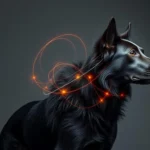
Recognizing signs of discomfort in dogs is crucial for pet owners. One subtle yet significant sign is squinting, which can indicate various health issues. Understanding the context of a dog’s squinting can help in identifying underlying problems that may require attention. This article will delve into the reasons behind why is my dog squinting, the associated signs, when to seek veterinary care, diagnostic procedures, treatment options, and preventive measures.
Understanding Squinting in Dogs
Definition of Squinting
Squinting in dogs is characterized by partially closing the eyelids, which can be more pronounced in certain situations. It often looks like the dog is trying to keep their eyes shut against bright light or discomfort. Normal squinting might occur in response to bright sunlight or while resting. However, if your dog is squinting frequently or for prolonged periods, it could be a sign of distress or discomfort.
Common Causes of Squinting
Several factors can lead to squinting in dogs, including:
- Allergies: Dogs can suffer from allergies just like humans, which can lead to inflammation and discomfort in the eyes.
- Eye Infections: Infections can cause irritation, leading to squinting as the dog tries to alleviate discomfort.
- Injury or Trauma: Any injury to the eye area can cause pain, resulting in squinting.
- Eye Diseases: Conditions such as cataracts or glaucoma can also be culprits.
- Environmental Irritants: Dust, smoke, and other irritants in the environment can provoke squinting.
Signs to Look For
Behavioral Changes
When a dog is squinting due to discomfort, it may exhibit various behavioral changes, such as:
- Increased Sensitivity to Light: A squinting dog may look away from bright lights or avoid well-lit areas.
- Pawing at the Eyes: Dogs may try to rub their eyes with their paws if they feel irritation.
- Reduced Activity or Lethargy: A dog in discomfort may become less active or show signs of fatigue.
Physical Symptoms
In addition to behavioral changes, other physical symptoms may accompany squinting:
- Redness or Swelling: The presence of redness or swelling around the eyes can indicate inflammation or infection.
- Discharge from the Eyes: Any abnormal discharge can be a sign of an underlying issue requiring veterinary attention.
- Changes in Appetite or Drinking Habits: If squinting is accompanied by changes in eating or drinking, it may signal a more serious problem.
When to Seek Veterinary Care
Urgency of Symptoms
Determining when to consult a veterinarian is crucial. If you notice any of the following symptoms alongside squinting, it is advisable to seek immediate veterinary care:
- Severe Redness or Swelling: Intense inflammation may indicate a serious condition.
- Persistent Squinting: If your dog continues to squint for more than a few hours, it warrants a veterinary visit.
- Discharge: Any unusual eye discharge should be evaluated by a professional.
- Behavioral Changes: Significant shifts in behavior, such as increased lethargy or withdrawal, are concerning signs.
Preparing for the Vet Visit
Before visiting the veterinarian, it’s helpful to observe and note specific details that can assist in diagnosis:
- Duration of Squinting: How long has the squinting been occurring?
- Accompanying Symptoms: Note any other symptoms your dog exhibits.
- Recent Changes: Consider any recent changes in your dog’s environment, such as new cleaning products or exposure to allergens.
Diagnostic Procedures
Common Diagnostic Tests
Veterinarians may conduct several tests to diagnose the cause of squinting:
- Physical Examination of the Eyes: A thorough examination can reveal visible signs of infection or injury.
- Tear Production Tests: These tests assess the tear production to rule out dry eye (keratoconjunctivitis sicca).
- Eye Pressure Tests: Measuring intraocular pressure can help diagnose conditions like glaucoma.
Interpreting Test Results
Understanding the results of these tests is essential for managing your dog’s health. For example:
- A low tear production result may indicate dry eye, leading to treatment options focused on increasing moisture in the eye.
- Elevated eye pressure can suggest glaucoma, necessitating urgent intervention to prevent vision loss.
Treatment Options
Medical Treatments
The treatment for squinting will depend on the underlying cause:
- Antibiotics for Infections: If an infection is diagnosed, your vet may prescribe antibiotics to combat the infection.
- Anti-inflammatory Medications: These can relieve pain and reduce swelling.
- Allergy Medications: Antihistamines or corticosteroids might be recommended for allergic reactions.
Home Care and Management
In addition to veterinary treatments, at-home care can help alleviate symptoms and support recovery:
- Regular Cleaning of the Eyes: Using a damp cloth to gently wipe away discharge can keep the area clean.
- Protective Eyewear for Outdoor Activities: If your dog is sensitive to the environment, consider protective eyewear when outside.
- Avoiding Known Allergens: Identify and minimize exposure to allergens that may be causing irritation.
Preventative Measures
Routine Eye Care
Regular veterinary check-ups are crucial for maintaining eye health. Ensure your dog receives routine eye examinations to catch any potential issues early. Additionally, consider these products for eye care:
- Eye Wipes: Gentle wipes designed specifically for dogs can help keep the area clean.
- Eye Drops: Consult your vet for appropriate eye drops that can help with dryness or irritation.
Environmental Control
To minimize exposure to irritants, implement these tips:
- Keeping Living Areas Clean: Regularly vacuum and dust your home to reduce allergens.
- Avoiding Smoke and Dust Exposure: Ensure your dog is not exposed to secondhand smoke or other environmental pollutants.
Conclusion
Understanding why is my dog squinting is vital for maintaining their health and well-being. By being proactive and observant, dog owners can catch potential issues early, ensuring their pets receive the care they need. Regular veterinary visits, coupled with careful monitoring of your dog’s behavior and symptoms, are essential components of responsible pet ownership. Remember, your dog’s eyes are windows to their overall health, and addressing any signs of discomfort promptly can lead to a happier, healthier life for your furry friend.









